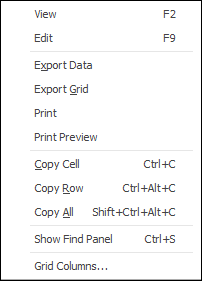
The suggested setups and procedures below are to assist you with identifying the reportable transactions (TPAR) to comply with Australian Taxation Office requirements for taxable payments reporting.
The assumption is that you are purchasing all sub-contract labour using Special type stock, as you will be tracking the cost of this labour against jobs. If some of the sub-contract labour is not chargeable to clients, it should still be added to the relevant job and invoiced out at zero (if it is internal, ie. not for a client, then add a job for your own company and assign the labour stock to that job).
|
If you were previously expensing the sub-contractor labour you should consider changing the method. |
Create a CardFile Non-Report Group
Go to Tools > Groups > CardFile > Non Report and right click on Root. Select Add Group and add a new card file group, eg. SC Reportable.

Assign the Relevant Vendor Card Files to the New Report Group
Go to CardFiles > Create CardFile List and tick Vendor. Edit the relevant vendor card files for your reportable sub-contractors, and assign them to the new card file report group.

Add a Non-Depleting Stock Record
Go to Stock > Add Stock, and add a non-depleting type stock record to use as a flagging mechanism on reportable purchase orders. Unit can be hour, tick Buy in and untick Sell in. You will not be putting a cost against, or selling this stock. It is simply a mechanism to identify the reportable purchase orders.

Add a Purchase Order for Each Reportable Invoice Provided by Your Sub-Contractors
You should add a purchase order for all sub-contractor labour using the Special labour stock code and the new non-depleting SC.REPORTABLE stock code, as this is your means of identifying the reportable POs.
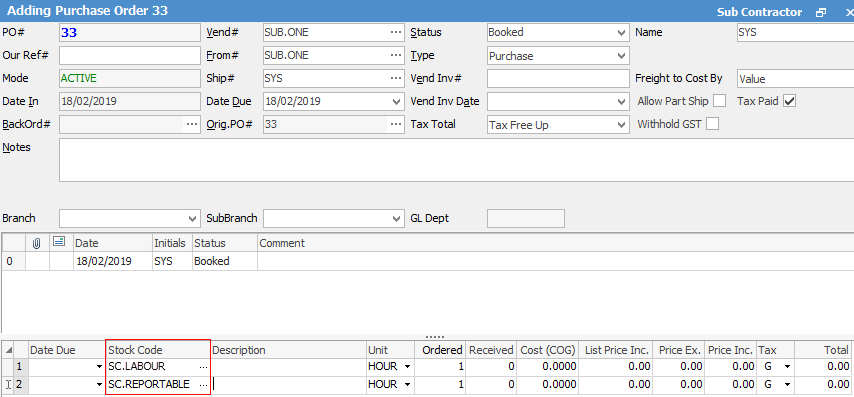
 |
You will see some letters underlined in the field names within the header, eg. Vend#. Using Alt+ the underlined letter will jump you to the field beside that heading. |
Add Watchouts to the Relevant Vendor Card Files
Go to CardFiles > Create CardFile List > Advanced > Group: SC Reportable to generate a list of the relevant vendors. Edit each card file in the list, and add relevant watchouts as prompts to add the flagging stock record to each reportable PO.
The following watchouts will appear when you:
1.add a PO and select the vendor, then move off the Vendor field,
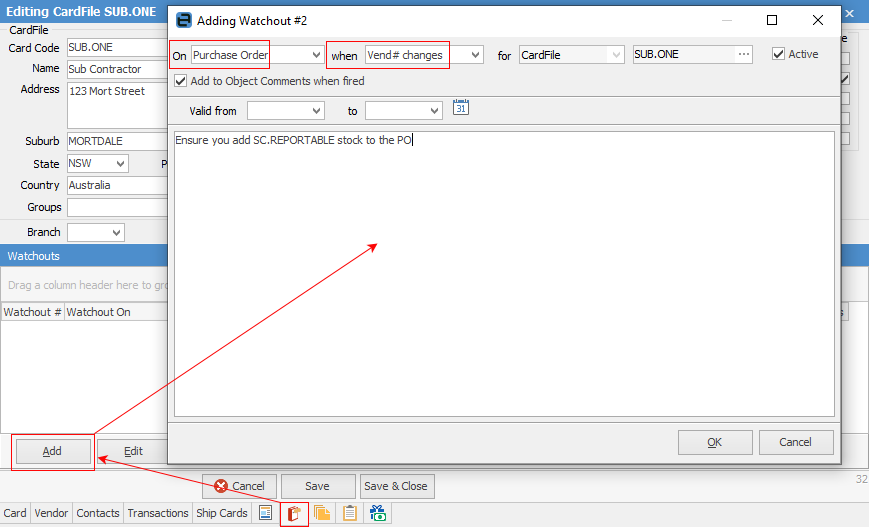
2.set a PO to Finish, before you save it.
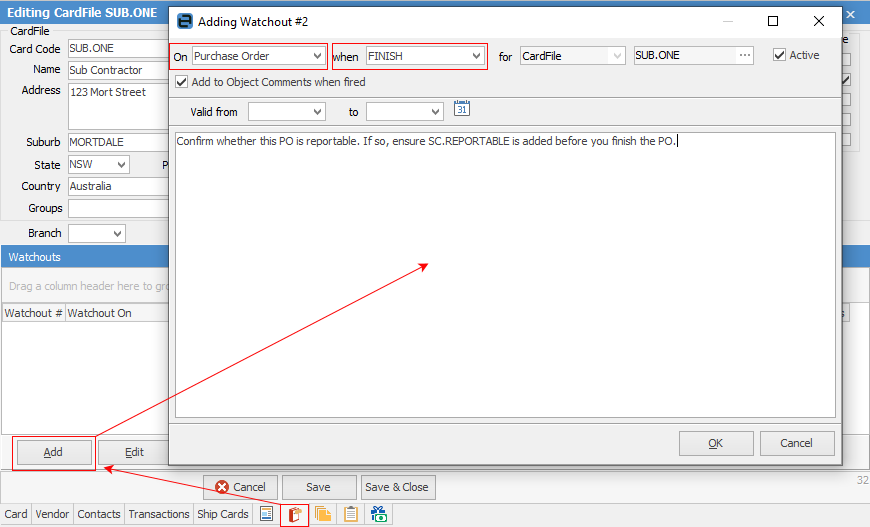
Identifying Reportable Purchase Orders
To compile the report for the ATO, you need to identify the reportable payments. In Jim2 terms this means you first need to identify the reportable POs, then confirm if they have been paid within the reporting period.
Go to Purchases > Create PO List > Advanced List. At the top right of the list untick Active and Received and tick Finished. Select the required date range by Inv Date for the reporting period, eg. financial year. Select the flagging stock code SC.REPORTABLE
If you want all reportable vendors to be included in your list, then select the vendor group SC.REPORTABLE and click Run. If you want to run the list separately for each vendor, then just select the vendor and click Run.
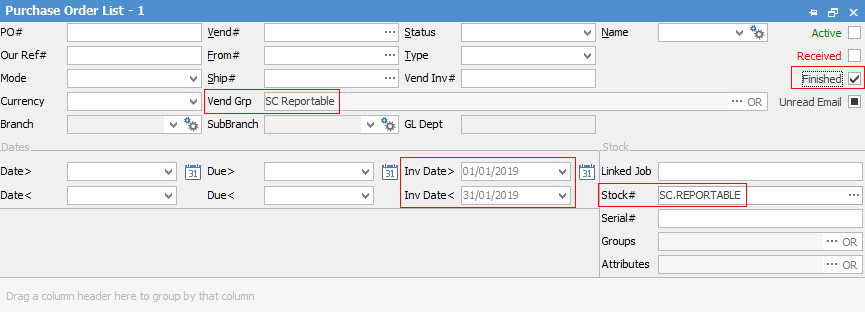
The list will provide you with the reportable POs with an invoice date within the specified period, but you will need to confirm which of these POs have been paid before you can complete your Australian Taxation Office reporting.
Generating Reports
If all the POs have been paid within the specified reporting period, you can simply print out the PO List – By Vendor report, which will give you the including GST total of the POs in the list.

If not all POs have been paid within the specified reporting period, you will need to manually calculate the total of the reportable POs. Right click in the list, select Export Data from the drop-down list. You can save the data as a spreadsheet file.
